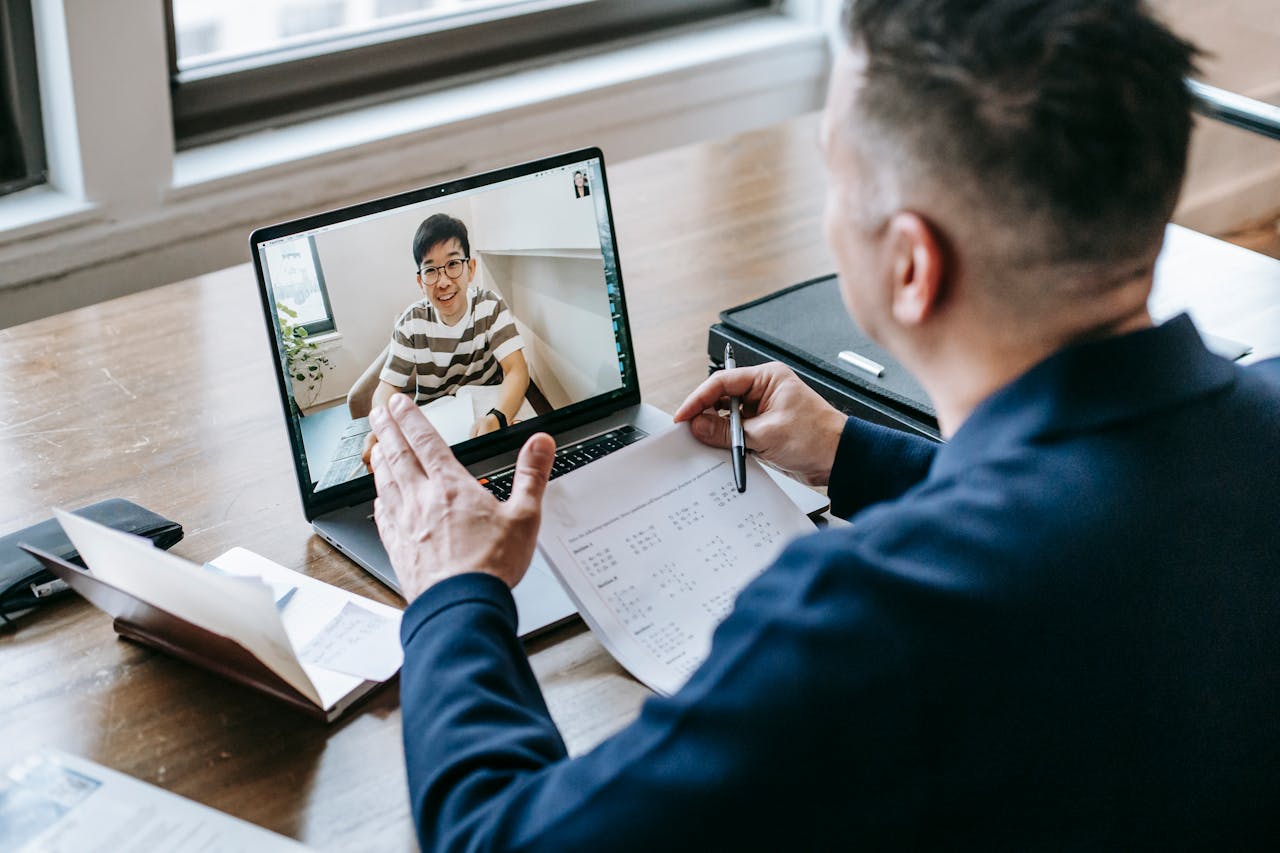This post was written by Jess Feldt, Facilitator and Coach at The Latimer Group.
As we gradually return to our physical workplaces, one might assume that the era of virtual meetings would dwindle. Yet, the reality is quite the opposite. Even as we RTO (Return-to-Office) many of us continue to meet virtually, whether it’s because we’re part of global organizations or just simply a lack of conference space. The way we communicate has changed, and the question many of us have pondered over recent years remains: Can we build genuine connection and communicate effectively virtually?
Research shows the answer is twofold. On one hand, virtual meetings can be just as effective for fostering meaningful connections, especially when facilitated through natural mediums like video conferencing. The ability to see facial expressions, hear tones of voice, and observe body language can bridge the physical gap, allowing for authentic interactions even across screens. A 2023 study completed by Claremont Graduate School found that videoconferencing and in-person interactions were similarly effective at producing high-quality connections.
However, the quantity of virtual meetings has also unveiled a pressing issue: video conference burnout. The constant barrage of back-to-back meetings, coupled with the strain of staring at screens for extended periods, can leave participants feeling drained and disconnected. In this context, the challenge lies in striking a delicate balance between leveraging the power of virtual communication and mitigating its adverse effects.
So, how do we navigate this virtual conundrum effectively? It all goes back to knowing our message and knowing our audience. We must recognize that not all interactions require the immediacy of a video call. Instead, we should reserve video conferencing for occasions where visual cues and real-time engagement are essential for building rapport and driving meaningful discussions.
Here are a few questions you can ask:
– Is this a new or developing relationship?
– Is this a potentially controversial discussion?
– Is visual feedback from the audience important to me?
If you’ve answered Yes, to any of these questions – video conferencing is probably the way to go. If you’ve answered No to these questions, audio may be sufficient.
When we use video conferencing when it matters most, we can maximize its impact while minimizing the risk of burnout. Additionally, incorporating breaks (in longer meetings) and setting clear agendas can help alleviate the strain of virtual interactions, making them more conducive to genuine connection and collaboration.
Let’s be honest, virtual meetings aren’t going anywhere. When utilized thoughtfully and in moderation, virtual meetings can be powerful tools for building connection and communicating effectively… even in a world where the office water cooler has gone digital!
Does your team:
– Take too long to make decision?
– Fail to ask for what it wants or needs from you?
– Make things too complicated?
– Deliver unconvincing or disorganized presentations?
– Have new hires who are unprepared to communicate in the workplace?
We transform teams and individuals with repeatable toolsets for persuasive communication.
Explore training, coaching, and consulting services from The Latimer Group.
Looking for more from The Latimer Group?






Comments